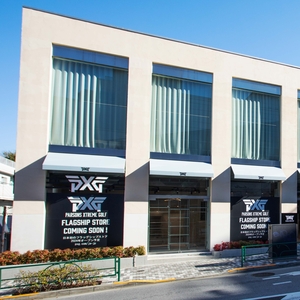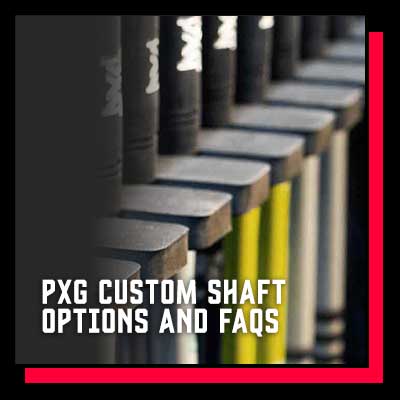Video Transcript
Mike Nicolette: Hi welcome back to tech Tuesday Mike Nicolette a senior design engineer. Here at PXG and I’m joined by Caleb Kroloff, and today we’re going to talk to you a little bit about the benefits of a high MOI and perimeter weighting and how we get that done with our golf clubs. Okay just a little background when we first started to develop our irons, here at the PXG. Bob Parsons is our founder had some pretty unique ideas on what he was looking for in the way of performance. Well one of the things he asked us for initially, he said I’d like to have a club that looks like a blade but is more forgiving than a cavity back.
Yeah, I said okay Bob you know those were polar opposites and he said I absolutely understand that and goes but it’s your job to figure it out. So, myself and another engineer here, Brad Schweigert, we got together and kind of started brainstorming we decided that you know to create this this more forgiving golf club obviously you need to have a very high MOI. And so, that requires perimeter weighting if you don’t have a cavity back golf club it’s hard to you know position the mass to the extremes of the head to achieve the goal. So, we decided to basically hide the cavity on the inside of the golf club. So, from the back you can see no cavity we do have quite a few ports drilled out for some very high, density tungsten weighting. But on the inside of the club its all CNC machined from a raw forging. And this allows us to mass position to the very extreme side of the golf club creating high MOI. And that’s basically what we do with the club head and then Caleb is going to talk to you about how MOI is basically increased as we go through the different sized club heads that we offer through a fitting process.
Caleb Kroloff: So, when we’re talking about MOI we’re talking about the moment of inertia and that really just means resistance to twisting. So, on your mis-hits, your clubs you want stay straighter you’re gonna have more ball speed at more consistent distance. So, one thing we have is we have three different golf club iron sets that you can choose from, we have our 0311Ts they’re more of our tour, smaller shape, our 0311s and then our 0311XF. So, what that really means is as you go across from the smaller more tour driven shape, it gets larger, the blade length gets bigger and there’s more offset. And as you’re creating a larger head you’re getting more perimeter weighting, more forgiveness. As we do that we’re also adding the offset as well as some thickness around the top-line to really dial it in for that player. So, we want the club head to really fit that player and that player type. So, more offset is going to help you to keep the ball from slicing and really help you turn the ball over and as that club head is getting longer that MOI is increasing about the shaft axis which can make it a little harder to turn over. So, what we’re doing is really helping the golfer to get the ball high in the air, get it turned over and really get it going.
Mike Nicolette: That’s great Caleb, I’m just gonna add one more thing he made mention of this so two important ways that we analyze a golf club when we do our design work is we want to analyze the MOI about the center gravity right. So, that’s your resistance to twisting about a vertical axis that goes through that point and that’s going to be basically you know if we miss hit the golf club how forgiving is it? So, in other words how much does it twist if we miss the center? So, if it twists more less energy gets transferred into the ball which means it’s not going to go as far.
So, high MOI, about the CG is very important. Caleb also alluded to the MOI about the shaft axis now that’s another way we analyze a golf club. Because as we make the head longer from heel to toe, so as we go from our tour version to our Xtreme Forgiveness version, the length of the club actually increases giving us more face area. It’s much easier for the average golfer to look at it, it doesn’t look intimidating. And it’s also more forgiving, since the actual mass of the club is you know positioned more extreme you have your causal weight that constitutes one mass. And then as you grow the club you have more mass out to the toe.
So, again what Caleb alluded to is that a longer club could be more difficult to square up since the center gravity moves further from the shaft axis, okay. So, to combat that we add offset to a longer Club so what happens is that when we let these hang in balance they’re going to balance virtually the same. And that what that means to you as a golfer is that when you swing them they’re going to square up the same. So, we don’t really want a club that’s influenced one way or another directly, we’d like for you to make your golf swing and the club come back to square each and every time.



